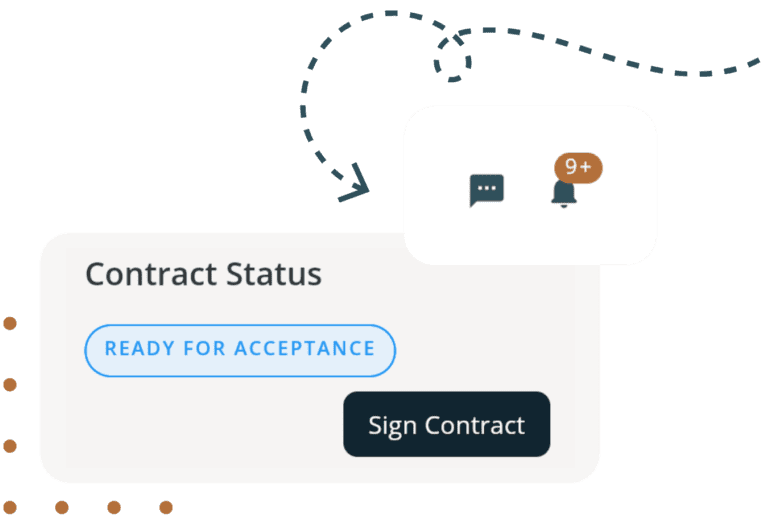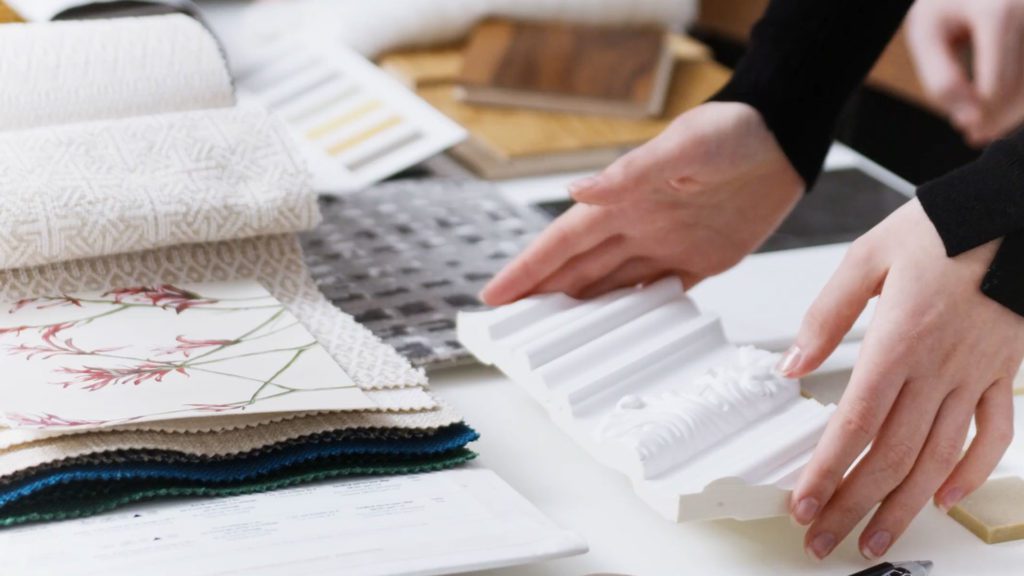
The industry is going through monumental changes, and an interior design contract is the best way to protect yourself and your business. Our revised guide includes 9 sections to include in your contract + bonus suggestions based on lessons we’ve learned over the past few years.
As a mild disclaimer, templates are a great start, but you really should consult a legal professional to have your contracts reviewed for your specific business and area.
Unfortunately, there are many necessary evils in this world, and it seems like there are even more that rear their head when you are trying to run your own interior design business!
One of the biggest necessary evils?
Covering your butt… and in the business of design there’s only one way to do that – a letter of agreement (LOA) or interior design contract.
It’s a legal document or tool help resolve any disputes that arise in the project, protecting both you AND your client. In plain language, it should present how your company works, and outline your expectations, while being transparent for your client. This document is signed by both you and your client(s).
They are essentially the same thing. These two terms are often used interchangeably.
Your contract should include:
You have may noticed that we didn’t include design fees in that breakdown. Depending on the scope of the project, you can include your fees directly in your contract. However, we believe it is best practice to leave them out. Fees and services should be addressed, but this is better suited in your “scope of work” document. Use your contract for “general business practices.”
Get your contracts signed easily by sending them to your clients through the Mydoma Client Portal. When you use the Mydoma Client Portal you reduce administrative work by giving your clients access to all of their project data in one central place. Plus, you can send invoices through the Portal to save yourself the awkward conversation.


1. Company Introduction
A friendly, short intro of who you are, your design philosophy, and the magic you bring to your projects. This little intro should get your clients excited to work with you, and get going on the project.
2. A Statement of Work
The statement of work is a short description of the project. This is different from a scope of work.
The scope of work is a detailed agreement where the work to be performed is described. The SOW should contain any milestones, reports, deliverables, fees, and end products that are expected to be provided by the performing party.
When delivering your contract, it’s unrealistic for you to have a complete scope of work at this time. For the contract, all you really need to do is include a simple statement of work. After the contract is signed, you’ll be doing the intake step of a project – which will help you determine a detailed scope of work to be presented and signed off by your client. The contract and scope of work will ultimately support each other.
3. Purchasing and Warranty Terms
This is a very important section of your contract. It’s important to ask yourself a few key questions.
Unfortunately, there isn’t really a one size fits all solution, as this section is dependent on how you run your design business. The most important thing however is to be transparent, and have an open communication with your client. Honesty will be your best asset to prevent future disputes.
4. Payment and Refund Cancellation Terms
We suggest putting your detailed payment schedule in your Scope of Work document rather than your contract. This is because the fee structure for individual projects may be dependent on the scope. Use this section to explain HOW payment terms will work. So be sure to answer the following.
5. Consultants and Contractors Clause
As Designers we don’t know how to do EVERYTHING, nor should we – experts exist for a reason. This clause is used for when you work with outside consultants or contractors to perform work. You may work with them, but you are not responsible for for their work. They are entering into an independent contract with your client. So this section should explain that, and, that you are not liable for them.
6. Photograph, Videography, and Publicity Terms
As design professionals, we work so hard to build a body of work for our portfolios. So there is not much worse than completing an absolutely beautiful job, only to have your client not allow you to photograph it, or use it in any publications. This clause is intended to set the expectation with your client that you will be photographing or taking video of their space (before, during, and after). What’s important here is to explain how you will use the assets, and how you’ll protect your client’s privacy.
7. Intellectual Property Clause
A big, and often overlooked thing with interior design contracts is intellectual property (or IP). There is a surprising amount of IP involved in the design process, including (but not limited to) design drawings, details, permits, 3D renderings etc. These assets are created for the client but are ultimately owned by the designer (that’s you) – and they’re valuable! So be sure to protect yourself by hi-lighting that here.
8. Termination Terms
Of course, we want every project and client to be a match made in heaven. (And if you follow the Mydoma Method, more often than not you’ll have just that!) BUT, from time to time, for a variety of reasons, a contract needs to be terminated. No matter the reason, it’s important to include a termination clause to let the client know how to get out of their interior design contact. This clause protects both you and your client, so be sure to be as clear and transparent as possible to avoid disputes.
9. Resolution of Disputes
Again, with any luck, things will go swimmingly between you and your client. But in the case that there’s a dispute, this is an important section to lay out how disputes on the project will be resolved, and, a disclaimer that no outside or further legal action can be taken against each other outside those terms.
“Mydoma has been a complete game-changer for my client relationships! It’s easy to use and clients appreciate the ability to go into their studio and find what they need whether it be documents, notes, project updates, photos, etc.”

Get your free Contract TEMPLATE
Want the fast-track to having your own interior design contract or letter of agreement? Then fill out the form to get our template to jumpstart the process!
Keep It Simple
If you’re a smaller interior design firm, there is no need to use any “hereto, forthwith’s” in your interior design contract / letter of agreement. Keep it short and simple, with easy to understand language, and making it as clear as possible with numbering and headings
Include a No Price Guarantee Clause
Don’t put yourself on the hook for for products or services that you are not performing.
Include an Insurance Clause
Accidents can happen, say, like, an antique china cabinet being broken during installation. You do not want to be on the hook for something like that, so include a clause that requires clients to have adequate insurance coverage for all furnishings and materials during handling, moving, storage, and installation.
Include a Health & Safety Section
Your local jurisdiction will have health and safety requirements for job sites. And while these rules are usually directed for contractors, or the professionals performing the work, recent events have also made it a clause to consider for interior designers. With new regulations and safety precautions because of the pandemic, it’s a clause that can be used to address what health precautions you’ll be taking yourself. Answer how you’ll promote a healthy working environment, and what you’ll expect of your clients. Again, be open and transparent.
See a Lawyer!
Like we said at the beginning of this post, templates are fantastic resources, but they are a jumping off point. They aren’t necessarily built for your business, or your area. So please please PLEASE always meet with a legal professional to have your contracts reviewed for your specific business.
Get the Signature!
An interior design contract is worthless without a signature. I know, it seems like a no-brainer, but it happens more than you expect. So don’t forget to review your contract with your client and have them sign it!
And the final bonus tip?
Getting your interior design contract signed is heckin’ easy with Mydoma Studio, the all-in-one business management tool for interior designers. For real. Create templates, save them in your account, and add them directly to your projects with ease! You can then have your client login, and review & approve the contract. Both parties receive notifications when documents are approved, making it the painless way of getting things done!
If you’d like to see how it works first hand, watch a Mydoma Studio demo here! If you’d like to jump into the platform and discover it for yourself, start a free 15-day trial today.